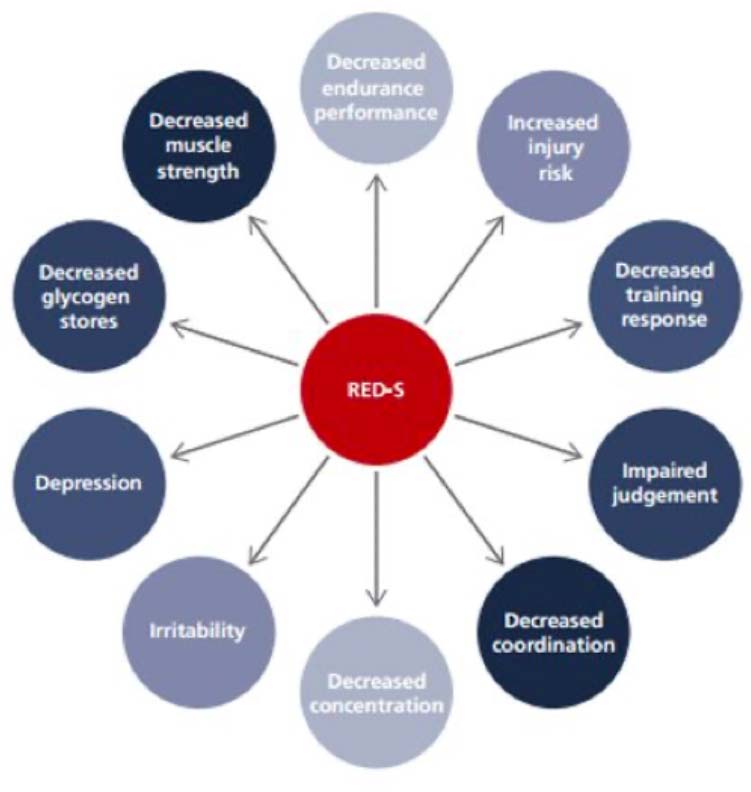Sport Nutrition Basics
General Healthy Eating
Based on recommendations by the Singapore Health Promotion Board, we should be having
- ¼ plate with whole grains
- ¼ plate with high proteins
- ½ plate with vegetables (approx 100g)
- two pieces of fruit per day
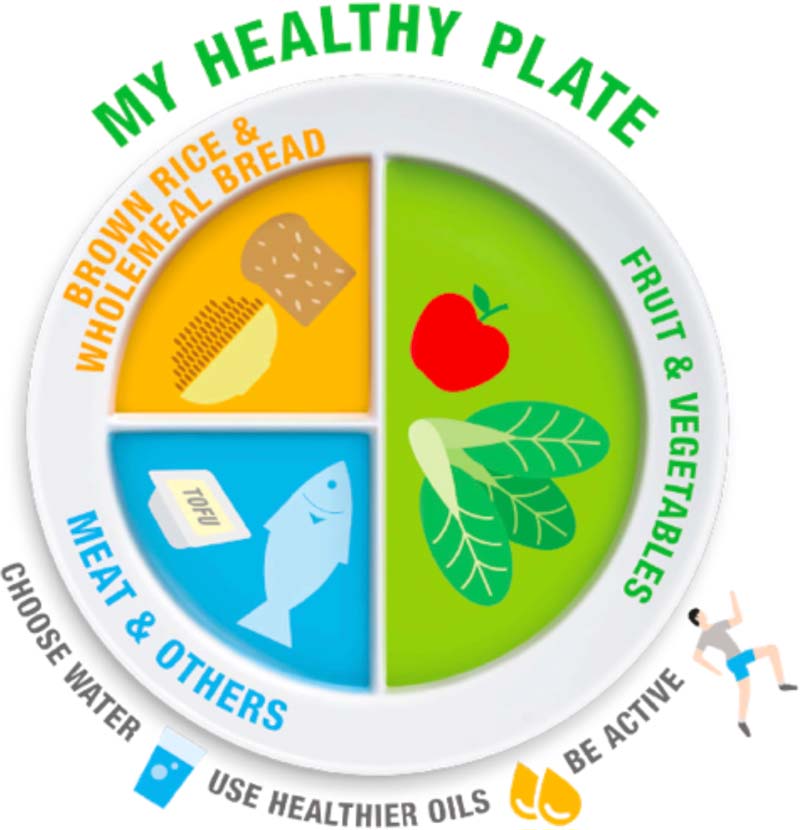
What’s Special About Sport Nutrition?
Sports Nutrition aims to help athletes with their training and competition goals, enhance their recovery and adaptation to exercise and also support their treatment and prevention of injuries.
Sports Dietitians consider your nutrition
- Before and during training
- During recovery (to limit the occurrence and impact of delayed onset muscle soreness (DOMS))
- In situations where you might have an injury (such as stress fractures, dehydration, joint pain and inflammation)
- To optimise performance
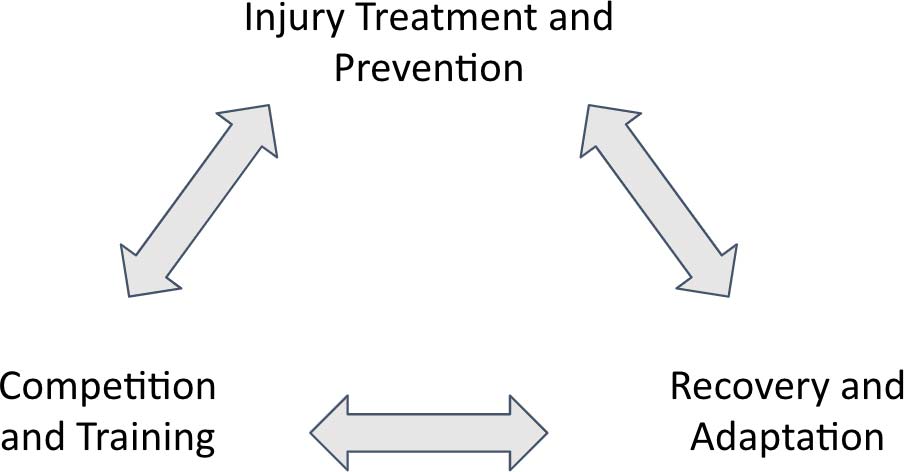
How much energy is needed?
The American College of Sports Medicine, International Olympic Committee and International Society for Sports Nutrition (Potgleter, 2013) suggest that the daily energy requirements should be based on physical activity levels.
| Physical activity level | kcal / day |
|---|---|
|
General physical activity (30-40 minutes/day, 3x/week) | 1800–2400 |
|
Moderate levels of intense training (2-3 hours/day, 5-6x/week) | 2500–8000 |
|
High-volume intense training (3-6 hours/day, 1-2 sessions/day, 5-6x/week) | 2500-8000 |
| Elite athletes | Up to 12000 |
| Large athletes | 6000–12000 |
Protein requirements
| Physical activity level | g/kg BW/day |
|---|---|
| General fitness | 0.8–1.0 |
| Older individuals | 1.0–1.2 |
| Moderate amount of intense training | 1.0–1.5 |
| High volume of intense training | 1.5–2.0 |
The protein can take the form of white or red meat, but with the latter, the fat content tends to be higher. For vegetarians, it can be made up from a mixture of pulses and soy based products.
The evidence is inconclusive in terms of consuming protein during endurance exercises.
Protein and Exercise
In 2017, the international society for sports nutrition published a position statement on the the relationship between exercise and protein consumption (Jager, 2017).
Protein consumption pre and post resistance training can help in the development of muscle after the exercise. For most individuals 1.4-2g/kg(bodyweight)/day is enough to help this aim. There is some evidence to suggest that >3g/kg(body weight)/day can help with weight loss in individuals who weight train.
Protein demands vary according to gender, age, level of training and previous physical activity levels, and consumption of protein should be distributed into 3-4 meals over the day.
For some, to obtain high quality protein, supplementation might be necessary depending on their diet
Even for endurance athletes, who focus on carbohydrate intake, protein can help limit muscle breakdown.
Casein protein (approx 30–40 g) prior to sleep can acutely increase muscle development and lipolysis throughout the night.
Nutrient Timing
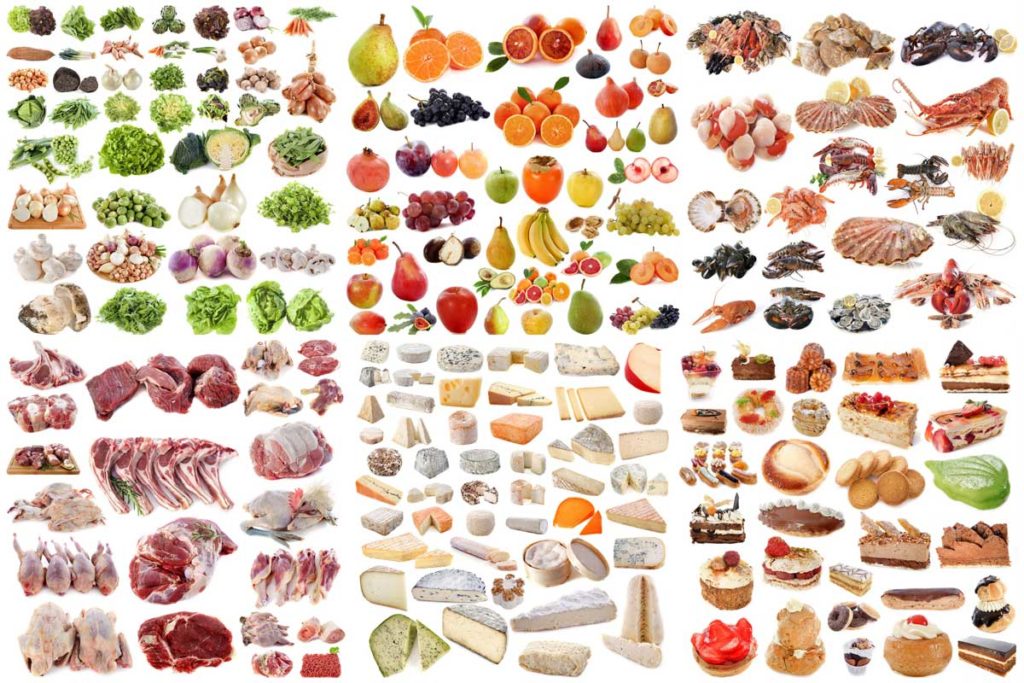
Carbohydrates
In 2017, the international society for sports nutrition published a position statement on the timing of nutrition in relation to exercise (Kerksick, 2017).
Based on these guidelines
- Glycogen stores in the body can be maximized by with a high-carbohydrate diet (8–12 g of carbohydrate/kg/day)
- These stores will be depleted most by high volume exercise
- Extended (>60 min) bouts of high intensity (>70%VO2max) exercise challenge fuel supply.
- Carbohydrate should be consumed at a rate of ~30–60 g of carbohydrate/h. This can be in a 6–8% carbohydrate electrolyte solution (6–12 fluid ounces) every 10–15 min.
- Consuming carbohydrate (+/- protein) during resistance exercise
- Increases muscle glycogen stores
- Reduced muscle damage
- Facilitates greater acute and chronic training adaptations
Protein
In 2017, the international society for sports nutrition published a position statement on the timing of nutrition in relation to exercise (Kerksick, 2017).
With Extended (>60 min) bouts of high intensity (>70%VO2max) exercise without sufficient fuel supply, adding protein may help reduce muscle damage.
Consuming carbohydrate (+/- protein) during resistance exercise:
- Increases muscle glycogen stores
- Reduces muscle damage
- Facilitates greater acute and chronic training adaptations
Post-exercise consumption of high-quality protein (within 2 hours) stimulates increases in muscle development.
Essential amino acids has been shown to stimulate muscle development.
Consuming 20–40 g of a high-quality protein 3-4 h appears to influence muscle developement rates when compared to other dietary patterns.
Casein protein (approx 30–40 g) prior to sleep can acutely increase muscle development and metabolic rate throughout the night.
Nutrition & performance
The Academy of Nutrition and Dietetics Dietitians of Canada produced a position statement in 2016 with general advice on nutrition and performance. In this they suggested that
- Nutritional requirements are not static; most athletes will undertake a periodized training program and nutritional support also needs to follow a similar pattern.
- Nutrition needs to be personalized, based on:
- Their event
- Performance goals
- Practical challenges in terms of volume needed to consume
- Food preferences/eating beliefs, etc
- Responses to various nutritional strategies
- The goal nutritional support is to provide adequate building materials and stores to meet the demands of an individual’s training and performance goals.
- For competition, nutrition should aim to reduce the impact of fatigue. It should be tailored to the
- Event
- Environment
- Athlete
- Athletes should be helped with a cost-benefit to determine which foods will have the optimal impact with the greatest value.
Supplements
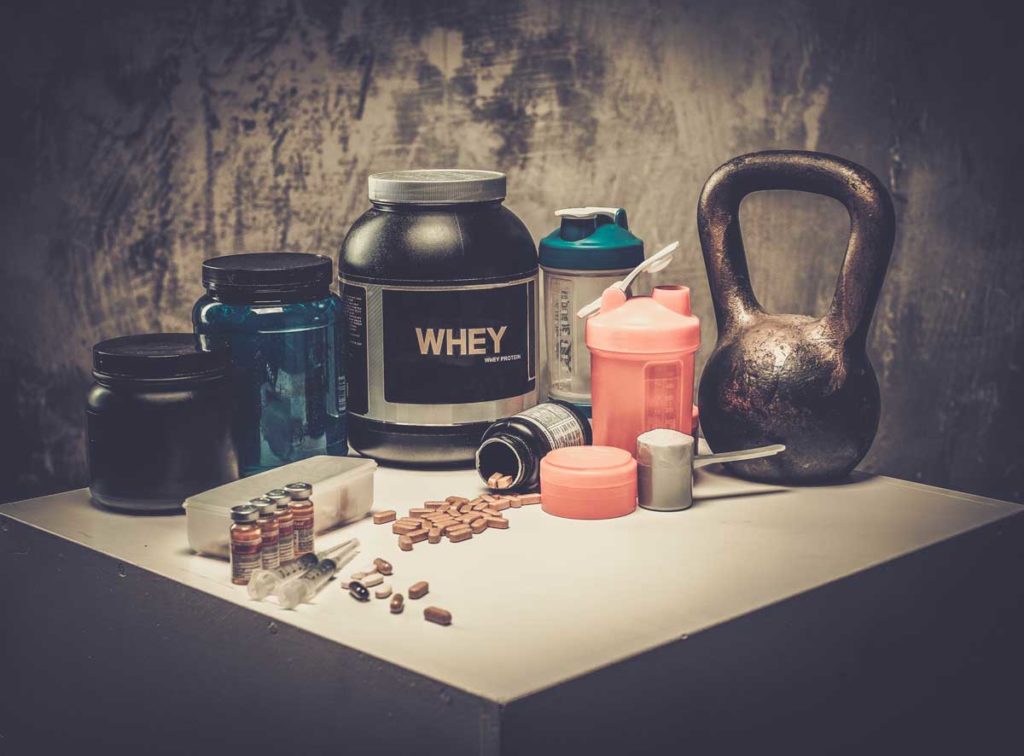
Supplements cannot replace or be a substitute for having a healthy and well-balanced diet that is tailored to the individual needs of someone who is training regularly.
Risks
When taking supplements, individuals who compete and who may undergo drug testing should understand that
- Supplements may contain prohibited substances, but these might not be listed on the ingredients
- The responsibility for evaluating this risk lies with the only with the athlete
- You can try to minimise the risk by
- Contacting the manufacturer to get written assurance that the product is free of any WADA prohibited substances
- Asking if manufacturing plant makes any products containing prohibited substances
- Even if your healthcare professional has recommended use of a supplement, the responsibility remains YOURS.
Reducing your risk
The easiest (and most obvious) way of reducing your risk is DO NOT TAKE SUPPLEMENTS! By sticking to a well balanced diet that meets your training demands, you should not need dietary supplements.
However, if you feel this is necessary, consider the following:
- Check what substances are banned on the World Anti-Doping Agency (WADA) website.
- Use batch-tested supplements to try and limit the risk using contamination.
- If your supplements are medicinal or for a medical purpose, then apply for Therapeutic Use Exemptions (TUEs) in time and with an open attitude.
Forms of supplements
In 2018, the International Olympic Committee produced a consensus statement on the use of supplements in high performance athletes (Maughan et al, 2018).
Sports Drinks
These can be in a powdered or ready to drink form and usually contain 5-8% carbohydrates, sodium and potassium.
Role: to rapidly replace fluids and sugars during and after exercise.
Energy Drinks
They are usually in a liquid or shot form and usually contain carbohydrates, caffeine and other vitamins.
Role: this can be used as a pre-exercise supplement to boost alertness and awareness during exercise.
Sports Gel/Confectionary
These usually contain 5-25g of carbohydrate depending on the size of the piece or sachet and some also contain caffeine.
Role: to enhance carbohydrate intake during exercise in a smaller and sometimes more palatable form.
Sports Bars
These typically contain 40-50g or carbohydrate and 5-10g of protein. There is usually little to no fat or fibre and some have supplemented vitamins.
Role: to provide carbohydrate during exercise and rapidly replace used stores afterwards. It is also more portable and storable than other preparations.
Electrolyte Replacement
These usually come in a powder form and will contact sodium, potassium and smaller quantities of carbohydrate.
Role: often used for rapid rehydration following weigh-ins and replacing salt during ultra-races.
Protein Supplements
These are usually in a powder form that will be mixed with water to provide 20-50g of protein, but often there can be other substances in the powder that could result in a positive drugs test.
Role: to enhance post exercise recovery and muscle development. It can also help with lean muscle gain.
Liquid Meals
These are typically made from powder and contain 1-1.5kcal/ml energy, 15-20% protein and upto 70% carbohydrate. Often, additional vitamins and minerals are added to the preparation.
Role: to supplement a high energy diet particularly during high volume training or competitions. This is particularly necessary when energy intake is insufficient through normal food consumed. It can also be helpful for post exercise recovery.
Types of supplements
Caffeine
Caffeine can be helpful in both endurance and high intensity, short-burst exercises. It increases alertness and responsiveness while decreasing the perceived work associated with exercise.
For maximum benefit, 3-6 mg/kg body weight is recommended at least 60 minutes before doing the exercise, but even at lower doses (<3 mg/kg body weight) there can be benefits when combined with carbohydrates.
Excessive caffeine can cause unpleasant effect such as nausea, agitation, abdominal discomfort and poor sleep. Caffeine can also cause increased fluid losses in the urine and over time, there can be a tolerance or over-dependence on it.
Creatine
Creatine enhances performance in sports where there are repeated high intensity efforts, or after resistance training and increased lean muscle mass is required, by increasing the production of Phospho-Creatine and in turn muscle strength.
Usually it requires loading of 20g/day over 5-7 days and then maintenance doses of 3-5g/day over the desired timeframe.
Other than potentially increasing body mass through fluid retention, creatine is not believed to have any overwhelming negative effects on those that utilise it.
Nitrates
By increasing the amount of nitrates available in the blood, nitrates are believe to have a positive impact on muscle function through
- Increased blood flow
- Enhanced energy production
- Reduced energy cost of force production
Consuming green leafy vegetables can help but effects are usually only seen 2-3 hours later.
It is believe to increase the time to exhaustion by 4-25% but requires regular use to be most effective and is typically beneficial in team sports with intermittent high intensity efforts.
There do not appear to be many side effects other than those on the gastrointestinal system and with the natural limit on consumption, due to volume, it can be quite specific to the individual.
Beta-alanine
Beta-alanine increases the ability for cells to deal with exercise, particularly high-intensity and intermittent.
When we exercise, acid is produced in the cells and a substance called carnosine can help with our capacity to cope with what is produced.
Regular use of beta-alanine can increase the amount of carnosine in our cells. Taking 0.8-1.6mg every 3-4 hours over 12 weeks can help build up this level.
Unfortunately the benefits can be quite individual with some people finding it is more helpful than for others. It has more limited impact on those who are highly trained and for some you can develop rashes or tingling after using it.
Sodium Bicarbonate
Sodium bicarbonate increases the body’s ability to cope with high levels of intense exercise. When we exercise, acid is produced in the body and a substance called the sodium bicarbonate can help with our capacity to cope with what is produced.
Taken as a single dose of 0.2-0.4 g/kg body weight usually 1-2 hours before exercise, it can also be split into smaller doses over the days before an event.
Bicarbonate can help increase tolerance of high intensity exercise that usually lasts <60 seconds, such as sprinting. However, there are common side effects such as bloating or abdominal discomfort. These can be reduced by consuming the sodium bicarbonate with meals or splitting the dose over the day.
Relative Energy Deficiency in Sport (RED-S)
Relative Energy Deficiency in Sport (RED-S) is a situation with insufficient caloric intake to match the excessive energy expenditure.
It can happen in male or female athletes and in the past was commonly known as the Female Athlete Triad.
This energy-deficient state can impact on many systems within the body, including
- Your overall metabolism, resulting in a slow down in energy production
- Menstrual irregularity with either prolonged gaps between periods or complete cessation
- Impacted bone health with a reduction in the overall density of bone and increased risk of fractures
- Impaired immunity and an increase in infection risk
- Protein synthesis impairment with slower recover from training and accelerated muscle breakdown
- Cardiovascular impact with reduced cardiac output and poor response to exercise
- Psychological health with low mood which can then impact on intake and training/competition
